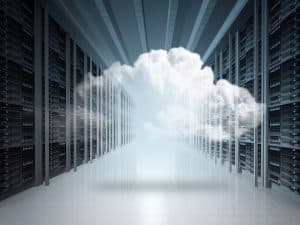
Five predictions for cloud computing and artificial intelligence in 2020.
We are living in a post-migration era of cloud computing, according to HiveIO VP of Product, Toby Coleridge, who provided RT Insights with a list of five predictions for cloud computing and artificial intelligence in 2020.
Influx of AI in Healthcare
The ethics behind large companies harvesting medical data for artificial intelligence systems may rage on for another decade, but HiveIO sees healthcare organizations as the catalysts for this evolution.
“As a result of data’s increasing perceived value, healthcare organizations will go to greater lengths in collecting data to meet end-user demands in 2020,” said Coleridge. “By capturing more personal data, healthcare organizations will be able to more accurately assist patients and predict their needs.”
SEE ALSO: Cloudwick Teams Up with Pepperdata for Improved AWS Cloud Migration
Coleridge believes that synergy between fitness brands, like Fitbit and Apple, and healthcare organizations will occur in the next five to ten years. Biometric data will be sent to a doctor’s office, which may run AI-assisted diagnostics to recognize any problems at an earlier stage.
Automation of diagnostics will remove a lot of tedious work for the doctor, while also spotting problems quicker. The only issue, currently, is the lack of clear connections between healthcare providers and technology companies, although there are some signs the big four want to break into the healthcare market.
Educators Use IT To Meet Student Needs
Digital native students require, according to Coleridge: “immediate gratification and a deeper level of knowledge and understanding.” To meet this demand, educational facilities will continue to adopt virtual desktop infrastructure systems, which allow students to work from remote locations, save the school money in updating and upgrading systems, and improve security with a centralized interface.
“Starting in 2020, we will see a shift in the entire education system – and VDI will be a key enabler for this,” said Coleridge.
On-Premise vs Cloud: It’s Not An Either-Or
While a vast majority of workloads will be processed by data centers, on-premises is still relevant and will remain necessary for some companies.
“In 2020, we will see the conversation around data storage shift from choosing cloud or on-premise, to deciding which applications an organization should run on-premise,” said Coleridge. “It’s not a matter of selecting one or the other, but rather, determining how both contribute to a comprehensive IT strategy.”
Cisco predicts that over 90 percent of workloads will be processed in the cloud by 2021, but that other 5-10 percent of usage will remain on-premise, and it’s not likely that number will fall rapidly in the next few years.
Cloud Migration Stage Will Pass
One reason why that percentage won’t drop is that the cloud migration stage is over, according to Coleridge. Cloud migration will decrease in 2020, for the first time since analysts predicted major migration.
“This is because most organizations interested in implementing a cloud strategy have already done so,” said Coleridge. “We will now begin to see the migration focus on automation in cloud and edge computing.”
How Much Can We Store?
A topic rarely spoken about in the cloud computing world is what’s the limit for storage. More and more data centers are being built around the world, and more information than ever is stored on hard drives, remaining on there for decades. Coleridge expects we will start to see storage constraints in the next five to 10 years, which will force the major data storage providers to build tools that discard raw data while keeping primary themes.



























